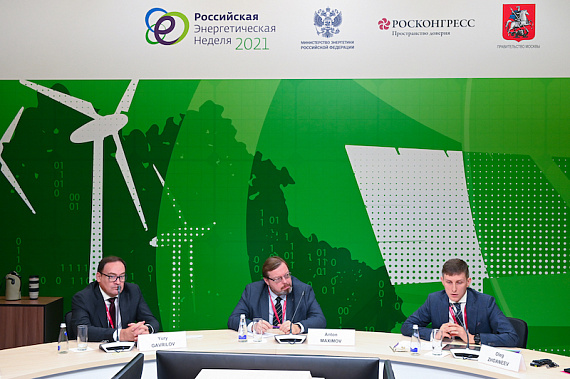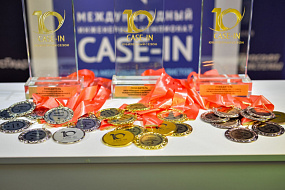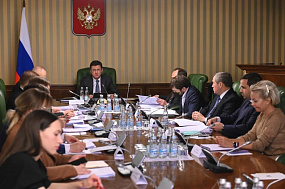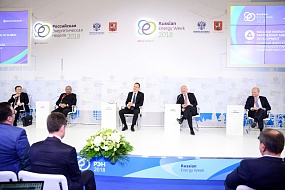A Hydrogen-Driven Future for Russia and the World: Dialogue with Business

KEY CONCLUSIONS
Russia must follow the global trend of developing hydrogen power
“There is no way back. We can discuss it as much as we like, but the fact is, hydrogen is a new form of fuel throughout the world. And we need to treat it not as a threat, but as an opportunity – simply by virtue of the fact that the country boasts a number of unparalleled competitive advantages. We know that all our neighbouring markets in the nations of Asia and Europe are building their hydrogen strategy on import dependence – they will not have enough of their own hydrogen. And this represents an opportunity to gain a foothold in these markets,” Alisher Kalanov, Head of Investment Division, RUSNANO.
“We have an excellent foundation for moving in this direction. We can see that the technology exists to varying degrees, and it is absolutely realistic over the next 10 years to move into large‑scale production, and to do so in a way that is acceptable from an economic point of view,” Yury Gavrilov, Strategy and M&A Director, METALLOINVEST.
“There is no longer any doubt about it – hydrogen power is gaining ground. A few years back, only three countries had hydrogen strategies in place – France, Japan, and South Korea. Today, there are almost 20 such strategies, and it’s all very well to say that action has been limited to these strategies, but the reality is that investment projects worth USD 200 billion are already under way, and there are plans for future projects worth USD 500 billion. This is an enormous market, a major trend, and Russia should undoubtedly play a leading role,” Anton Moskvin, Vice President for Marketing and Business Development, Rusatom Overseas.
PROBLEMS
The latest Russian technologies for producing green hydrogen are too expensive to be used on a mass scale
“The things implemented at laboratories and even at individual industrial facilities by no means work just as effectively at an industrial level. It’s not just that these are very costly projects, the issue is that they are not economically viable in general,” Yury Gavrilov, Strategy and M&A Director, METALLOINVEST.
“Today, the production cost of blue hydrogen – low-carbon hydrogen from fossil energy sources – is somewhere around USD 1.5 per tonne. Green hydrogen, on the other hand, costs around USD 5–6. These are technologies from different eras. And the technology enabling us to make blue hydrogen now enables us to quickly and relatively cheaply create demand, and to build up the very markets and foundation needed to create demand for green hydrogen in the future,” Vladimir Rogov, Managing Director, Partner, BCG.
“Our situation regarding green hydrogen is probably much worse than it is for blue hydrogen. While we have resources and reasonable technical experience in relation to blue hydrogen, when it comes to green hydrogen, the technologies we are using are akin to something from the mid-1970s,” Anton Maximov, Director, Topchieva Institute of Petrochemical Synthesis of the Russian Academy of Sciences.
Green hydrogen is not set to go into widespread use in the coming years
“We talk a lot about which colour hydrogen is preferable right now, but as a matter of fact, not a single country has banned imports of oil and gas,” Vladimir Rogov, Managing Director, Partner, BCG.
“There will definitely be demand for blue hydrogen in Asia and Europe over the next 10–15 years. There is no talk about any projects – be they local or international – looking to adopt green hydrogen as the only acceptable option. It is extremely expensive, especially if we’re talking about international shipments,” Anton Moskvin, Vice President for Marketing and Business Development, Rusatom Overseas.
“Fossil fuels will long continue to play an enormous role in the energy mix, accounting for up to 70%. We are not about to immediately leap into the future, and are not set to move over to green hydrogen,” Vladimir Rogov, Managing Director, Partner, BCG.
SOLUTIONS
Developing the market and creating new hydrogen production technology
“Right now, we understand that the hydrogen market is one of great uncertainty. We do not know how big it will be, and even our export forecasts to 2030 fluctuate in the extreme, ranging from 2 to 12 million tonnes. If we want to produce hydrogen in Russia by 2030 for the purposes of selling abroad or utilizing, we need to overcome a range of technological barriers that in effect emerged in 1999–2000. We need to appreciate that the technology we are using has fallen behind, not so much because of the quality of technological solutions, but rather because of issues related to large systems engineering,” Anton Maximov, Director, Topchieva Institute of Petrochemical Synthesis of the Russian Academy of Sciences.
“There is uncertainty on the international market due to specific risks. Meanwhile, there is uncertainty on the domestic market as we do not yet have such tough regulation for the hydrocarbon market, which could otherwise serve as an economic incentive to transition to low-carbon hydrogen. As far as all this is concerned, we will remain in a state of uncertainty for a long time to come; however, investment needs to be made today. Pilot initiatives are therefore critical, as they allow us to conduct reconnaissance. The structure of the global hydrogen market will be determined by those who play a role in it early on,” Dmitry Kholkin, Director, Energinet Infrastructure Centre, North-West Strategic Research Centre Foundation; Deputy Head of Working Group, EnergyNet NTI.
Implementing domestic regulatory mechanisms and providing government subsidies to the industry
“It is already key at this early stage to create a domestic hydrogen market. Initially, it will probably be regulated, and subsidies will be crucial. It’s probably more important that subsidies are offered to buyers of low-carbon hydrogen. Then we will have market incentives in place for the use of hydrogen,” Dmitry Kholkin, Director, Energinet Infrastructure Centre, North-West Strategic Research Centre Foundation; Deputy Head of Working Group, EnergyNet NTI.
“Together with the government, we need to not only look at the regulatory framework which will support the implementation of ambitious projects of this kind, but also at additional incentives for implementing projects which are highly energy- and capital-intensive,” Yury Gavrilov, Strategy and M&A Director, METALLOINVEST.





